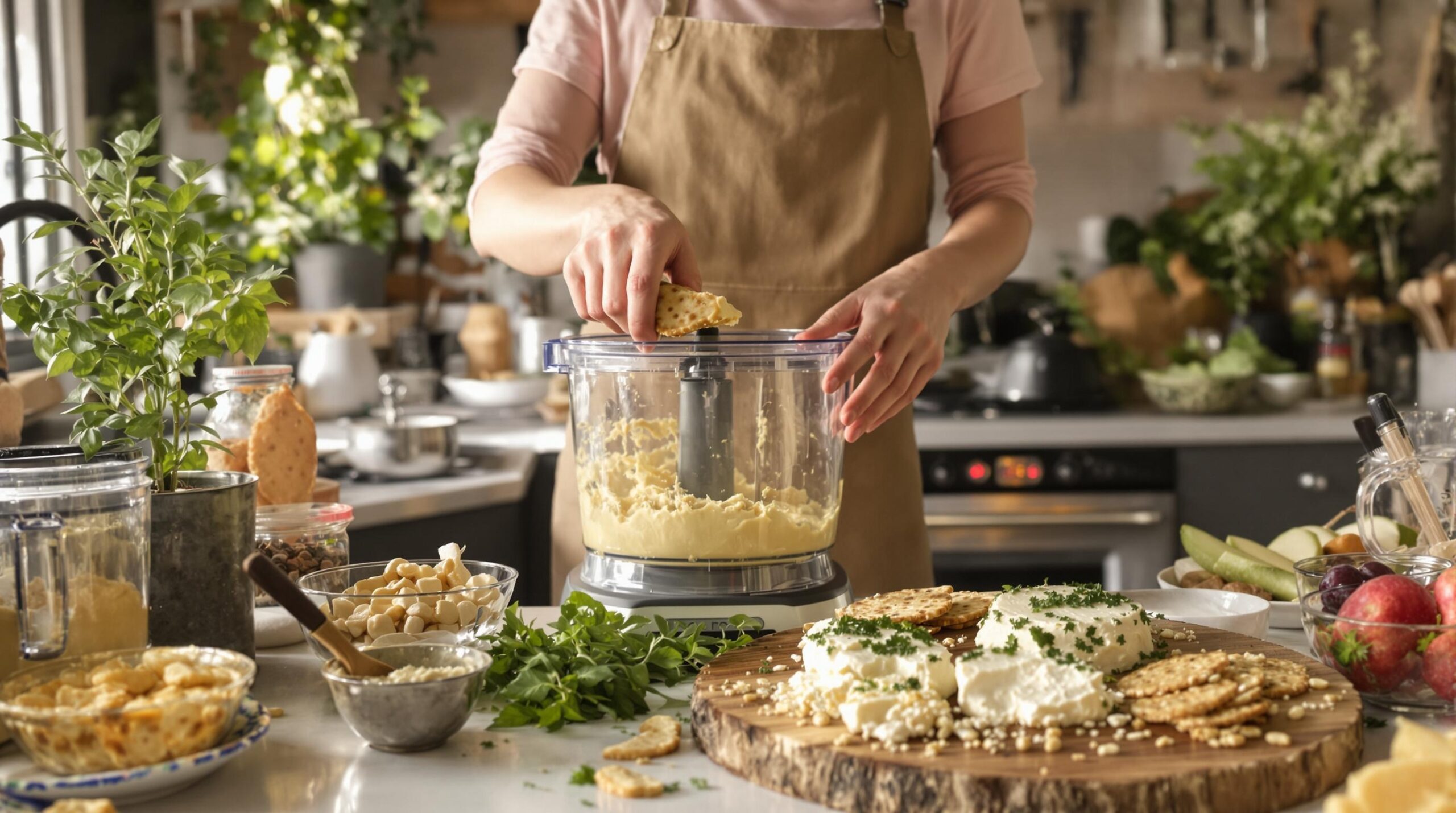Creating delicious and authentic plant-based cheese at home can be a rewarding culinary adventure. Many people seek dairy alternatives for ethical, health, or environmental reasons. Homemade plant-based cheeses offer a personalized approach to crafting unique flavors. These cheeses can be just as creamy and delightful as traditional ones.
Understanding the Basics of Plant-Based Cheese
Plant-based cheeses derive from a variety of natural ingredients. Nuts, seeds, and legumes dominate as standard bases. These ingredients mimic the texture and flavors of traditional cheese. Cashews, almonds, and soybeans are popular choices for their creamy consistency. Nutritional yeast adds a cheesy flavor, making it a staple in many recipes.
Essential Tools and Ingredients
The right equipment ensures a smooth cheese-making process. A high-powered blender is essential for creamy textures. Cheesecloths or nut milk bags help strain out solids for smoother cheese. Molds can shape the cheese, giving it a professional appearance. Key ingredients include nuts, nutritional yeast, agar-agar, and probiotics. Spices and herbs enhance flavors and provide unique twists.
Fermentation: The Secret to Flavor
Fermentation plays a crucial role in plant-based cheese-making. It adds depth and authenticity to the flavors. Probiotics or natural fermentation methods help develop complex tastes. Allowing cheese to age enhances its richness and texture. Patience is essential during this process as flavors mature over time.
Step-by-Step Cheese-Making Process
Begin by soaking nuts or legumes to soften them. This step is necessary for easy blending. After washing, blend ingredients into a smooth paste. Add nutritional yeast, salt, and any chosen spices or herbs. For cheeses requiring firmness, incorporate a setting agent like agar-agar. Heat this mixture to activate the agar-agar and set the cheese.
Next, pour the mixture into molds or containers. Allow the cheese to cool and set in the refrigerator. Leave them at room temperature for several hours or overnight for fermented cheeses. Once set, refrigerate or age your cheese further. This stage gives the cheese a firmer texture and enhanced flavors.
Troubleshooting Common Issues
Even seasoned chefs encounter challenges when making plant-based cheese. Grainy textures often result from insufficient blending. Revise by blending again until smooth and creamy. Overly salty cheese can be adjusted by diluting it with additional base ingredients. If your cheese lacks flavor or tang, extend fermentation time. Experimenting helps fine-tune techniques and suits personal taste preferences.
Exploring Flavor Variations
One of the joys of making plant-based cheese is experimenting with flavor combinations. Smoky paprika can create a fiery kick. Garlic and herbs impart a familiar savory note. Truffle oil or nutritional yeast can make a gourmet feel. Roasted red peppers add sweetness and depth. Harnessing these flavors transforms a basic recipe into a culinary masterpiece.
Health Benefits of Plant-Based Cheese
Plant-based cheeses offer numerous health benefits. They are typically lower in saturated fat than traditional cheese. Many are cholesterol-free, making them heart-friendly options. They can suit lactose-intolerant individuals or those with dairy allergies. Some plant-based cheeses also provide beneficial probiotics, supporting gut health. Including them in your diet can contribute to overall well-being.
Economic and Environmental Impact
Making plant-based cheese at home can be cost-effective. Bulk purchasing of nuts, seeds, and legumes can lower expenses. Reduced packaging waste aligns with sustainable living practices. Moreover, plant-based cheese production has a lower carbon footprint than dairy cheese. Choosing plant-based options supports a more sustainable and environmentally friendly lifestyle.
Serving and Enjoying Plant-Based Cheese
Presentation elevates the enjoyment of homemade cheese. Arrange different flavors on a platter for a delightful tasting experience. Pair these with fresh fruits, nuts, and artisanal bread for variety. Creative plating showcases the effort put into your homemade creations. Serving cheese this way offers an opportunity to educate others about plant-based options.
Sharing the Joy of Homemade Cheese
Discuss your plant-based cheese journey with friends and family. Share recipes and techniques to inspire others to try their hand at making cheese. Hosting a cheese-making workshop or tasting event can spark interest. Your home kitchen becomes a hub of learning and enjoyment. Passing on skills fosters a sense of community and culinary exploration.
Expanding Your Cheese Repertoire
As confidence grows, experiment with new recipes and ingredients. Explore international plant-based cheese styles, such as feta or chèvre. Each type offers unique challenges and flavors. Creating blue cheese with spirulina introduces complexity to your cheese plate. Dive into the world of plant-based cheese with curiosity and creativity.
Conclusion
Mastering the art of plant-based cheese is a rewarding endeavor. The process encourages creativity and allows for versatility in taste. Homemade options present a healthy, sustainable alternative to traditional dairy. The satisfaction of crafting your cheese complements the pleasure of sharing it. Celebrate the vibrancy of plant-based living with homemade cheese creations.
Each homemade cheese tells a story of care, innovation, and passion. These creations reflect a commitment to personal health and global environmental efforts. Making plant-based cheese at home contributes to a culinary and ecological revolution. Approach each new recipe with an open mind and a spirit of adventure.
Additional Resources
Numerous cookbooks and online communities offer guidance and inspiration for further exploration. Video tutorials provide visual aids for perfecting techniques. Engage with others in plant-based forums to share successes and troubleshoot failures. The world of plant-based cheese-making is wide and welcoming.
Embark on this flavorful journey and enjoy your homemade plant-based delights.

